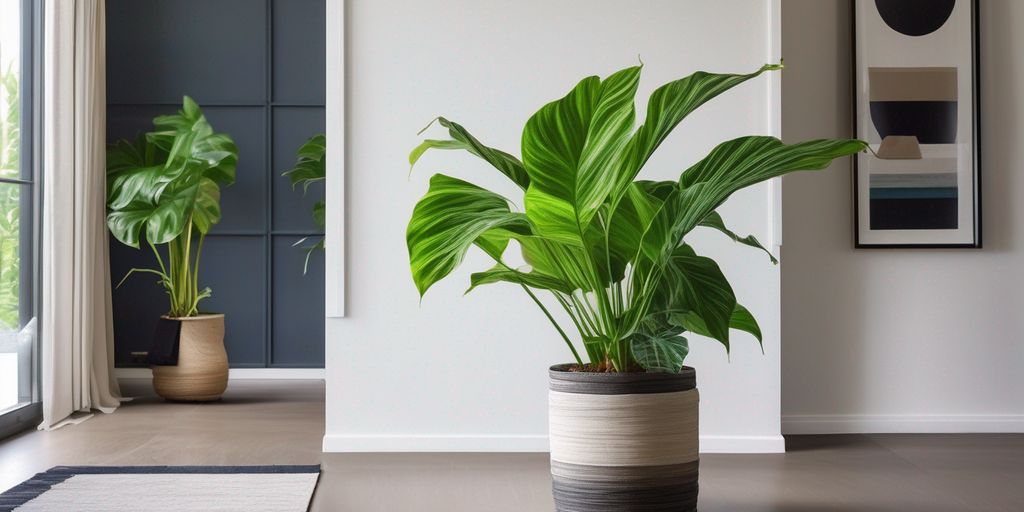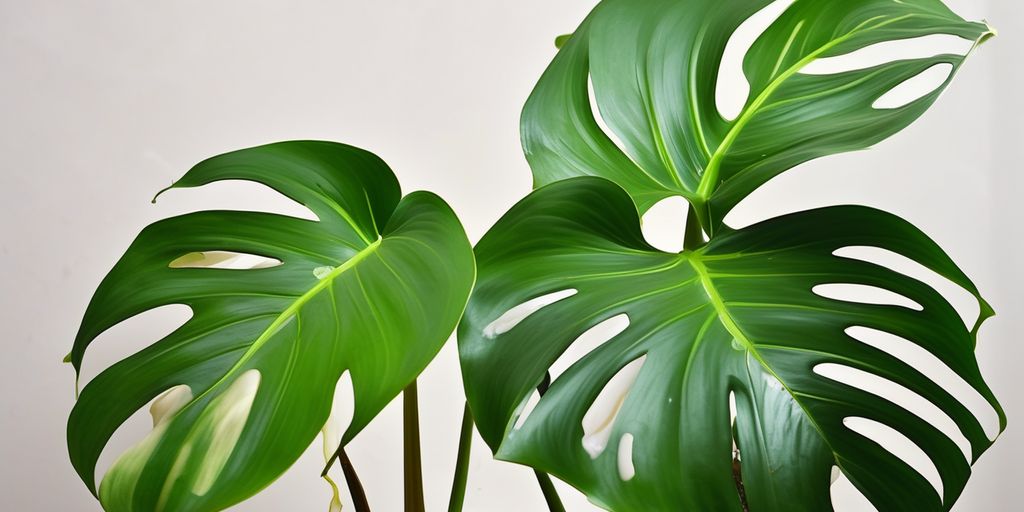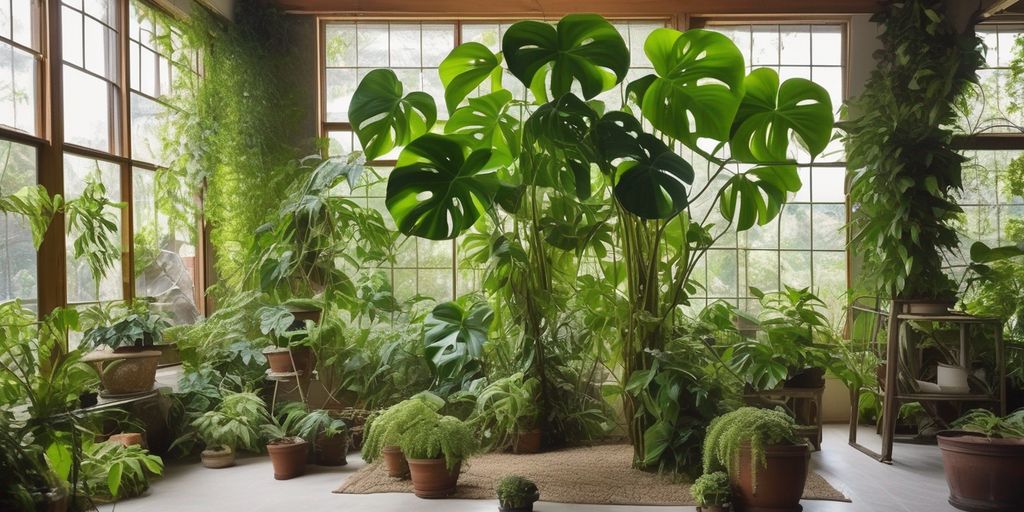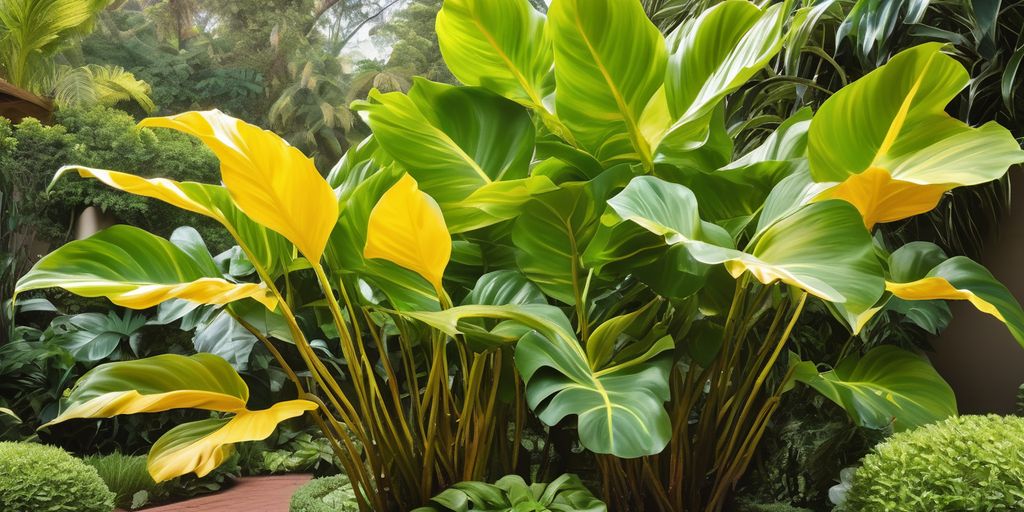The Philodendron Mamei is a stunning houseplant known for its unique, heart-shaped leaves and striking silver variegation. As a member of the Philodendron family, it requires specific care to thrive indoors. This article provides essential tips on how to nurture your Philodendron Mamei, ensuring it grows healthy and maintains its aesthetic appeal.
Contents
- 1 Understanding Philodendron Mamei
- 2 Optimal Lighting Conditions
- 3 Watering Your Philodendron Mamei
- 4 Soil and Fertilization Needs
- 5 Temperature and Humidity Requirements
- 6 Pruning and Maintenance
- 7 Pest Management
- 8 Conclusion
- 9 Frequently Asked Questions
- 9.1 How often should I water my Philodendron Mamei?
- 9.2 What is the ideal light condition for Philodendron Mamei?
- 9.3 What type of soil is best for Philodendron Mamei?
- 9.4 How do I know if my Philodendron Mamei is overwatered?
- 9.5 What pests should I watch out for on my Philodendron Mamei?
- 9.6 How should I prune my Philodendron Mamei?
Key Takeaways
- Understanding the origins and specific growth patterns of Philodendron Mamei is crucial for proper care.
- Providing optimal lighting conditions is key to maintaining the vibrant color and health of the leaves.
- Regular and appropriate watering is essential, avoiding both overwatering and underwatering.
- The right soil mix and timely fertilization significantly influence the plant’s growth and overall health.
- Maintaining the correct temperature, humidity, and regular pruning will help prevent diseases and promote lush growth.
Understanding Philodendron Mamei
Origins and Characteristics
Philodendron Mamei, a stunning member of the Araceae family, is native to the rainforests of South America. This plant is known for its large, heart-shaped leaves with distinctive silver markings. The Philodendron Mamei thrives in humid, warm environments, mimicking its natural habitat.
Growth Patterns
Philodendron Mamei exhibits a moderate growth rate, typically expanding its foliage outward rather than upward. This creeping growth habit makes it ideal for spacious areas where it can spread comfortably. During its active growth phase in spring and summer, it can produce new leaves every few weeks under optimal conditions.
Popular Varieties
There are several popular varieties of Philodendron Mamei, each with unique features:
- Silver Cloud: Known for its intensely silver-variegated leaves.
- Green Beauty: Features more uniformly green foliage.
- Platinum Mist: Stands out with its almost metallic silver leaves.
Each variety offers something special, making Philodendron Mamei a versatile choice for indoor plant enthusiasts.
Optimal Lighting Conditions
Ideal Light Intensity
Philodendron Mamei thrives in bright, indirect light. Avoid direct sunlight as it can scorch the leaves, leading to discoloration and damage. An east-facing window is typically ideal, providing the gentle morning sun.
Effects of Low Light
While Philodendron Mamei can tolerate low light, it will not grow as vigorously and its leaves may become leggy and sparse. If you notice a significant reduction in growth or leaf size, consider augmenting with artificial lighting.
Adjusting Light for Seasons
The intensity and duration of natural light vary with seasons, necessitating adjustments in plant positioning or lighting:
- Spring and Summer: Position further from windows to avoid intense direct sunlight.
- Fall and Winter: Move closer to light sources to compensate for shorter days.
Tip: Use sheer curtains to diffuse direct sunlight during peak hours, protecting your Philodendron Mamei while providing ample light.
Watering Your Philodendron Mamei
Watering Frequency
Philodendron Mamei should be watered when the top inch of soil feels dry. Water thoroughly until it drains out of the bottom, but allow the soil to dry slightly between waterings. Over-watering can lead to root rot, so it’s crucial to monitor soil moisture regularly.
Signs of Overwatering
Overwatering is a common issue with Philodendron Mamei. Signs include yellowing leaves, a mushy base, and a general look of wilting. If you notice these symptoms, reduce your watering frequency immediately and check if the pot has adequate drainage.
Best Watering Techniques
To ensure your Philodendron Mamei receives just the right amount of water, use the soak and dry method. This involves watering the plant deeply and allowing the soil to dry out before the next watering. For best results, use room temperature water and water early in the morning.
Soil and Fertilization Needs
Choosing the Right Soil
Selecting the appropriate soil for your Philodendron Mamei is crucial for its health and growth. A well-draining, peat-based potting mix is ideal. Ensure the soil is loose enough to allow air to reach the roots, which is vital for preventing root rot.
Fertilization Schedule
Philodendron Mamei should be fertilized every month during the growing season (spring and summer) with a balanced, water-soluble fertilizer. Reduce the frequency to once every two months in the fall and winter, when the plant’s growth naturally slows down.
Signs of Nutrient Deficiency
Watch for signs such as yellowing leaves or stunted growth, which may indicate a nutrient deficiency. Regularly check the plant and adjust your fertilization practices accordingly. If symptoms persist, consider getting a soil test to accurately diagnose the issue.
Temperature and Humidity Requirements
Ideal Temperature Range
Philodendron Mamei thrives best in temperatures between 65°F to 80°F (18°C to 27°C). Avoid sudden temperature fluctuations to prevent stress on the plant.
Humidity Preferences
This plant prefers high humidity levels, ideally between 60% to 80%. Using a humidifier or placing a water tray near the plant can help maintain the desired humidity.
Adjusting Conditions in Extreme Weather
During extreme weather conditions, it’s crucial to adjust your care routine to protect your Philodendron Mamei. In hot weather, ensure adequate shading and increased humidity. In cold conditions, protect the plant from drafts and provide gentle warmth if necessary.
Pruning and Maintenance
When to Prune
Pruning your Philodendron Mamei is essential for maintaining its health and promoting lush growth. Typically, pruning should be done in the spring or early summer, which allows the plant to recover and grow vigorously during its active growing season. Remove dead or yellowing leaves, and trim back any overgrown branches to encourage a fuller shape.
Techniques for Healthy Pruning
To ensure healthy pruning, always use sharp, clean shears or scissors. Make strategic cuts just above leaf nodes to encourage new growth. Avoid cutting more than one-third of the plant at a time to prevent stress. Here are some steps to follow:
- Sterilize your cutting tools.
- Identify areas that need thinning or shaping.
- Make angled cuts to promote healing.
- Dispose of all removed parts properly to avoid spreading pests.
Cleaning and Dusting Leaves
Regular cleaning of your Philodendron Mamei’s leaves not only keeps the plant looking attractive but also improves its overall health by enhancing photosynthesis. Use a soft, damp cloth to gently wipe each leaf. This routine should be part of your regular plant care, especially in environments with high dust levels. Additionally, consider using a mild, organic leaf shine product to keep the leaves glossy and healthy.
Pest Management
Common Pests
Philodendron Mamei can be susceptible to a variety of pests, including spider mites, mealybugs, and aphids. Regular inspection is crucial to early detection and effective management of these pests.
Organic Pest Control Methods
To manage pests organically, consider using neem oil or insecticidal soap. These products are effective against most pests and are safe for the plant and the environment. Always test a small area first to ensure that your Philodendron Mamei does not react negatively.
Preventive Measures
Preventive measures are key in maintaining the health of your Philodendron Mamei. Ensure good air circulation, avoid overwatering, and keep the leaves clean to reduce the risk of pest infestations. Implementing quarantine practices for new plants can also help prevent the spread of pests to your existing collection.
Conclusion
Caring for a Philodendron Mamei can be a rewarding experience for any plant enthusiast. By providing the right environment, consistent watering, and proper nutrition, you can ensure your Mamei thrives and beautifies your space. Remember to monitor its growth, adjust care as needed, and enjoy the unique charm and lush foliage this plant brings to your home or office. With these tips, your Philodendron Mamei will not only survive but flourish, becoming a stunning centerpiece in your collection of houseplants.
Frequently Asked Questions
How often should I water my Philodendron Mamei?
Water your Philodendron Mamei about once a week, but adjust based on soil moisture. Allow the top inch of soil to dry out between waterings.
What is the ideal light condition for Philodendron Mamei?
Philodendron Mamei thrives in bright, indirect light. Avoid direct sunlight, which can scorch the leaves.
What type of soil is best for Philodendron Mamei?
Use a well-draining, aerated potting mix. A blend of peat, perlite, and vermiculite is often recommended.
How do I know if my Philodendron Mamei is overwatered?
Signs of overwatering include yellowing leaves, a musty smell, and a soggy soil base. Reduce watering and improve drainage if observed.
What pests should I watch out for on my Philodendron Mamei?
Common pests include spider mites, mealybugs, and aphids. Regularly inspect your plant and use organic methods to control any infestations.
How should I prune my Philodendron Mamei?
Prune to remove dead or yellowing leaves and to shape the plant. Use clean, sharp scissors and cut near the base of the stem.




